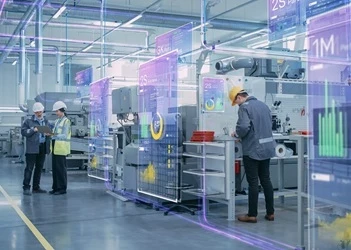Why process discovery is one more step toward process excellence
Learn how process discovery accelerates the drive toward process excellence by capturing accurate representations of business processes
Add bookmark
Typically, processes are best captured by the people who know them – those end users and teams that are most familiar with them. They know the systems, procedures and steps because they use them regularly, and can provide the most realistic picture of how a process actually runs. They know both what the procedure manual recommends and the usual shortcuts or workarounds that teams are actually implementing.
Oftentimes those teams have innovative and insightful suggestions about how their processes could be improved, utilizing their understanding of the process to identify redundancies or better workflows.
Unfortunately, that same familiarity can also prevent organizations from seeing opportunities. The mantra “we have always done it this way” can be a significant barrier to improvement and, even if unspoken, the inability to question the status quo can often lurk beneath the surface of long-established practices.
Conversely, process experts can cut through some of that reluctance, looking at process maps under the cold light of efficiency and analyzing activities and procedures for optimal performance.
Process experts have the opposite problem as while they might identify unnecessary steps or redundant actions, they do not really know the process apart from what is on the page. Any contextual information or legacy knowledge that might inform those steps is not available to them, potentially undermining improvement suggestions.
Process discovery has the ability to bring these two perspectives together.
Pair process excellence with process discovery
One of the challenges of continuous improvement is identifying where those improvements should come from. While there will always be a place for capturing user suggestions and the careful analysis of process-trained experts, the growing power of process discovery tools is offering new possibilities.
Process discovery utilizes artificial intelligence (AI) and integrated tools to capture screen activity, keystrokes and system actions to get a clear picture of process actions. Because the information is gathered at the point of activity, it is directly linked to actual execution, not an idealized impression of it.
Because that information is gathered across thousands of examples and in every instance of the process action, however, it is also comprehensive and not reliant on anecdotal reporting.
The power of process discovery comes with the potential for continuous improvement. As this data is captured and assessed by AI tools, task loops and repetitive actions can be highlighted for immediate attention.
Paired with a powerful robotic process automation (RPA) tool, process discovery allows for quick and effective automation solutions that target pain points that might otherwise slip through unnoticed in a manual process evaluation. An effective process discovery tool will pinpoint the quick wins from an automation standpoint, allowing for immediate improvements and the resultant return on investment (ROI).
Maximize the benefits
There is no reason that progress should end there, though. While process discovery is great for picking up the systematic bottlenecks, the next logical step for the technology is to bridge the gap to traditional process improvement practices.
Rather than relying on process experts working with on-the-ground teams to capture the process activities for more nuanced examination, the process discovery tools could soon automate that step, too.
It is only a small leap, but an exciting one. Utilizing the existing framework of AI tools, process discovery applications could work in concert with process mapping platforms to capture the as-is process, at the same time as they are exploring opportunities to optimize those actions.
Process experts could then sign off those easy wins through automation and have a head start on the analysis of the remaining activities, performing the kind of evaluation that is still beyond AI.
Process discovery does not replace an organization-wide commitment to process excellence, but it certainly accelerates it. In the near future process discovery also promises to enable targeted process improvements for even more effective and efficient process outcomes.
What are your thoughts on how process discovery accelerates optimization? Let us know in the comments below.



















